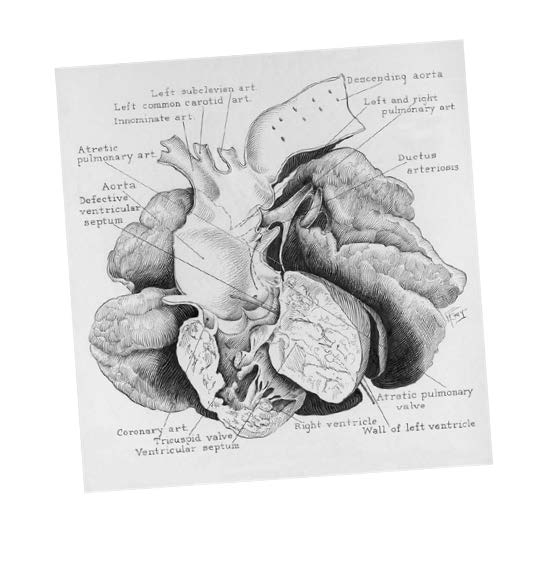Eleanora Fry and the history of medical illustration at Mayo Clinic
Throughout the 1910s and ‘20s, Eleanora Fry worked in the Mayo Clinic art studio. There, she buried herself in the task of medical illustration, sketching out concepts like diverticulitis, uterine prolapse and radical mastectomy.
“She would often work on a single drawing day after day, not speaking, hardly moving,” medical illustrator Rebekah Dodson wrote in a brief 1989 biography of Fry.
Sometimes, an electric light in the art studio would turn on, interrupting the stillness. The light indicated that a physician was calling for one of the artists to come to the operating room to observe something for illustration.
As medical illustrators like Fry worked with surgeons like Drs. William J. and Charles H. Mayo, they were able to “elegantly, yet concisely describe the pioneering surgical procedures being developed at the Mayo Clinic,” Dodson wrote.
This collaboration between Mayo Clinic physicians, surgeons and medical artists resulted in illuminating illustrations, compelling journal articles and beautiful works of art that survive a century later.
A NEED FOR ILLUSTRATION
In 1894, Johns Hopkins hired German illustrator Max Brödel and put him to work drawing medical images and surgical procedures.
Brodel’s work was crucial. This was a time when surgical innovation was exploding across specialties, partially due to the discoveries of antiseptic and ether as anesthesia. Physicians wanted to explain their work in medical publications, but black-and-white photography could only capture so much. Medical illustrations could provide clear, educational views and step-by-step instructions.
“They were all fortunate in working during a golden age of discovery, at a time when surgery reigned supreme. New surgical discoveries were observed nearly every day and it was vital that the illustrators record it,” Dodson writes.
Drs. William J. and Charles H. Mayo routinely visited Johns Hopkins and took note of Brodel’s work. The Mayo brothers tried to convince Brödel to work at Mayo Clinic and, failing that, they routinely sent their own medical illustrators to train under him. Mayo Clinic established an art studio at Saint Marys Hospital in 1907. In 1912, Mayo Clinic hired New York illustrator Eleanora Fry, who became head of the studio.

“THE BEST ARTIST WE EVER HAD”
Fry’s stunning illustrations are distinct in their dramatic style. Her clear, illuminative drawings helped form the foundation of the Mayo Clinic style still used by its medical artists today.
The woman behind the illustrations is more mysterious. It’s unclear exactly when Fry was born, when she died or why she left Mayo after 20 years of working there. Large periods of her life are unaccounted for.
There are some known biographical details: Fry was trained at The Pratt Institute of Art and worked in the department of anatomy at Columbia University with Dr. George Sumner Huntington. Once at Mayo, she periodically trained with Brödel.
In 1913, Dr. William J. Mayo wrote of Fry: “She is the best artist we have ever had. She is a quiet, sensible girl, conscientious and hardworking.”
She maintained that serious, focused reputation throughout her two decades at Mayo. One illuminating anecdote relayed by Dodson: when the illustrators were upgraded to soft leather chairs, Fry topped her seat with a wooden drawing board — a “self-imposed discipline.” Another story involving her co-illustrator Russell Drake demonstrates her total absorption in her work.
“(Drake) had noticed her slow methodical way of working out a whole drawing, her solemness, her quietness, her overall concentration. He noticed that she would sit totally still for hours, barely moving, never glancing at the clock,” Dodson writes. “One day, some hour well before the 5:00 p.m. quitting time, he put on his coat and hat, said ‘Good evening’ to her, and walked out the door. Fry, never looking at the clock, took his cue and (also) left for the day.
“It is said, when she discovered she’d been tricked, that she went a long, long time without speaking to him.”



MEDICAL ILLUSTRATION TODAY
Today, Mayo Clinic’s Division of Biomedical and Scientific Visualization employs medical illustrators, animators and support staff. They continue to partner with physicians, surgeons, educators and researchers to clearly convey medical information to patients, medical students and professional audiences.
Along with illustrations, the division creates animations, 3D models, interactive visuals and more — but it all builds on a long history that began with illustrators like Eleanora Fry.
“The body of work (Fry) produced has made a lasting contribution to both the fields of surgery and illustration,” Dodson wrote.
Read more about how clinical anatomists use medical illustration and other modalities in education, practice and research at Mayo Clinic.

